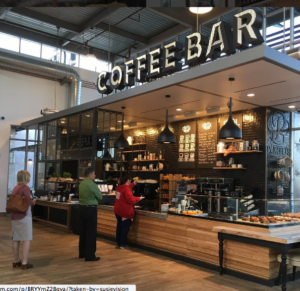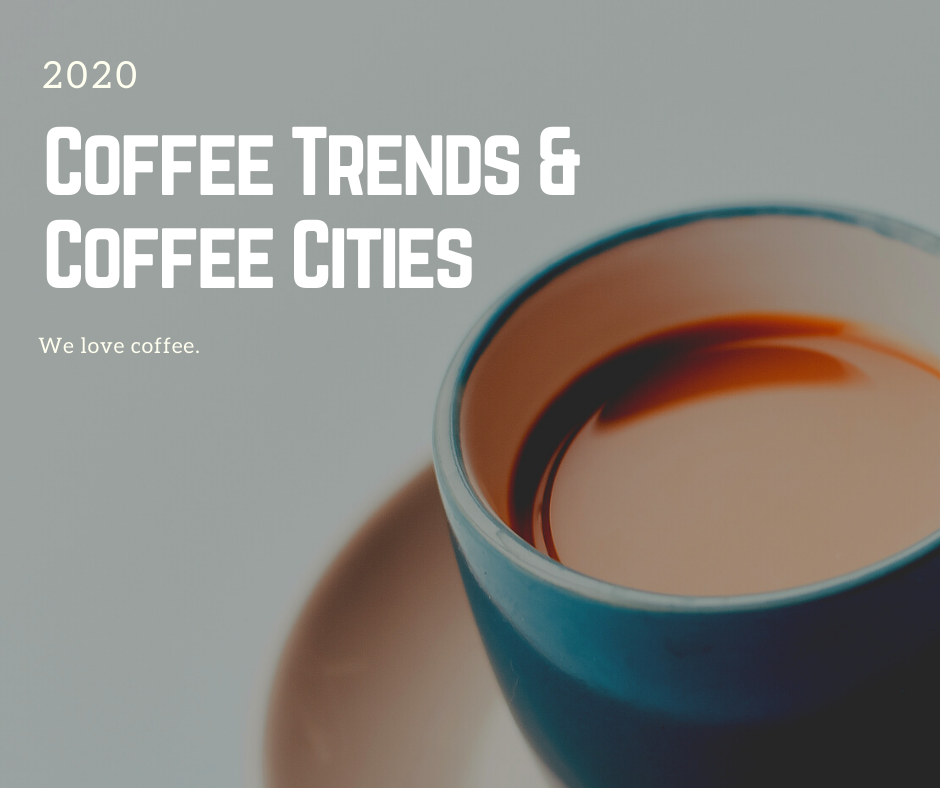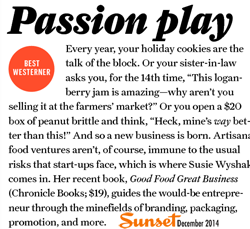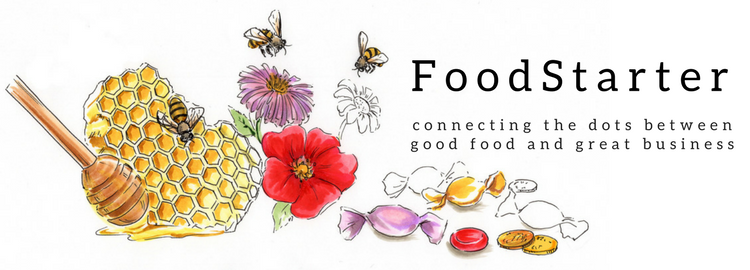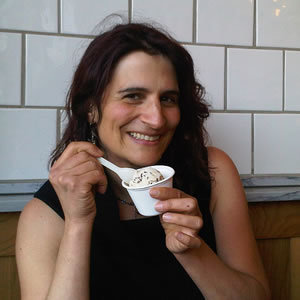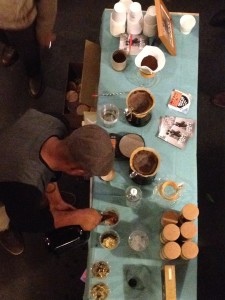 WalletHub released its 2020 list of best cities for coffee fans. But do these cities matter given how many people are making coffee at home?
WalletHub released its 2020 list of best cities for coffee fans. But do these cities matter given how many people are making coffee at home?
It’s no secret that I am obsessed with visiting coffee roasting cafes around the world.
- I’ve got an Instagram hashtag #susiescafeaday. (Before that my Flickr Global Coffee Quest documented my caffeinated adventures.)
- I documented a tour of coffee roasters in Austin in 2011.
- A goal on my SuperViva life list was (and is) to visit 100 cafes in Italy.
So it is with an Oscar-like anticipation that I click an email declaring the Top 20 Cities for Coffee Lovers.
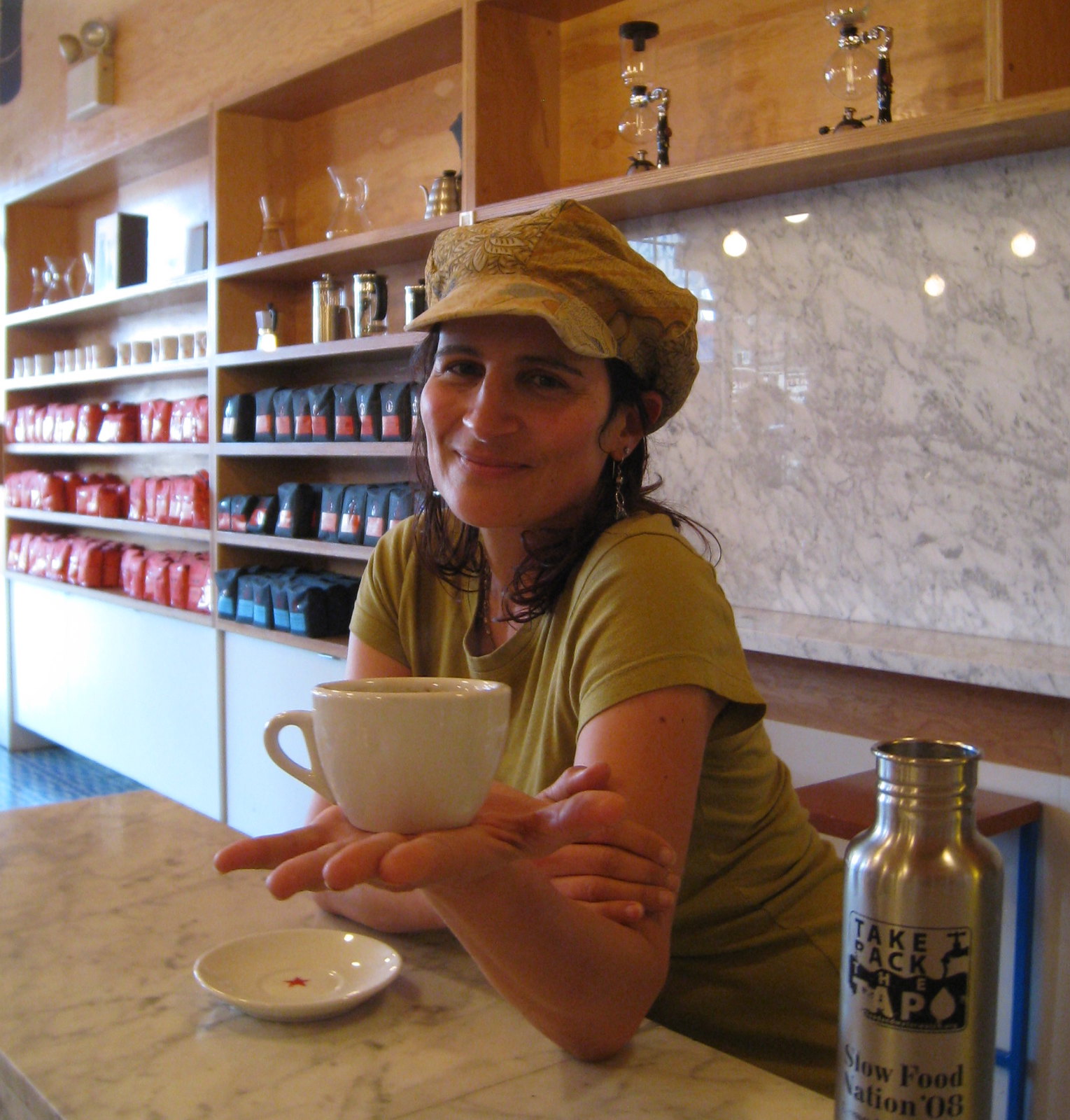
Sigh…every year I have an issue with the Top Coffee Cities list.
That issue usually centers on where Oakland falls on the list—and what defines a “best city.”
For one thing, Blue Bottle has its flagship cafe in Oakland (and roasted in Oakland until moving roasting to Sacramento). The Mr. Espresso’s factory, Cole Coffee roasters, and The Crown, Royal Coffee’s lab are based in Oakland. Then there’s Highwire Coffee Roasters, another local and growing cafe and coffee roaster.
View this post on Instagram
Hot coffee lazin’ on a sunny afternoon in the summertime #oaklandcafe @colecoffeeinc #susiescafeaday
Maybe taking alone Oakland does not compare with Tampa but…
The real problem is that this list does not consider adjacent cities. Emeryville and Berkeley are one with Oakland. We glide among these cities in pursuit of different styles of coffee and cafes.
When combined with Emeryville (where Counter Culture and McLaughlin Coffee—which powers many local cafes with dark, Berkeley-style coffee—blows even San Francisco out of the water.
The original Peet’s Coffee is in Berkeley, adjacent to Oakland.
You heard me. Sure Ritual Roasters, Linea, and Four Barrel are in San Francisco.
But the hardcore, volume roasters that know good coffee and distribute to foodservice all over the West Coast and maybe even the country are based on the East Bay.
Los Angeles may be behind the LBC which is where the Specialty Coffee Association is based. But Los Angeles is home to Gavina, whose organic coffee I buy from Costco. (We all have our dirty coffee secrets.) I still wonder: How do these cities fall behind Atlanta, Georgia?
What’s truly surprising is that Sacramento didn’t make the Top 20 list. I’m guessing it will next year, as the coffee roasting scene has really exploded there.
Now before you move to Orlando, consider that WalletHub may be using the coffee per capita to equal “best city.” Just because there are a lot of McDonald’s and Starbucks does not make a coffee obsessive’s dream locale.
| Top 20 Cities for Coffee Lovers According to WalletHub | |
| 1. Seattle, WA | 11. Minneapolis, MN |
| 2. San Francisco, CA | 12. Orlando, FL |
| 3. Portland, OR | 13. Washington, DC |
| 4. Miami, FL | 14. Boston, MA |
| 5. Tampa, FL | 15. Long Beach, CA |
| 6. Pittsburgh, PA | 16. Los Angeles, CA |
| 7. Honolulu, HI | 17. Irvine, CA |
| 8. Denver, CO | 18. New Orleans, LA |
| 9. Oakland, CA | 19. Austin, TX |
| 10. Atlanta, GA | 20. Jersey City, NJ |
Check my running list of best coffee cafes in the Bay Area. I’d like to compare it to your favorites in your city!
Best vs. Worst (according to WalletHub, NOT me)
- Miami and Hialeah, Florida, have the lowest average price for a pack of coffee, $3.44, which is 2.4 times lower than in Honolulu, the city with the highest at $8.10.
- Fremont, California, has the highest average annual spending on coffee per household, $236.41, which is 3.7 times higher than in Detroit, the city with the lowest at $63.91.
- Gilbert, Arizona, has the highest share of households that own a single-cup/pod-brewing coffee maker, 25.68 percent, which is 2.9 times higher than in Newark, New Jersey, the city with the lowest at 9.01 percent.
- Orlando, Florida, has the most coffee shops, coffee houses and cafés (per square root of population), 0.4571, which is 7.5 times more than in Laredo, Texas, the city with the fewest at 0.0611.
- Portland, Oregon, has the most coffee and tea manufacturers (per square root of population), 0.0219, which is 43.8 times more than in Riverside and San Bernardino, California, the cities with the fewest at 0.0005.
Here’s the full WalletHub report.
A Homemade Coffee Trend Took Off During Shelter in Place
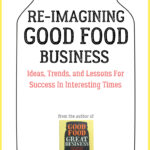 Companies like Melitta rolled out new pourover filters for people taking camping staycations and making coffee at home rather than visiting cafes.
Companies like Melitta rolled out new pourover filters for people taking camping staycations and making coffee at home rather than visiting cafes.
As I wrote about in my new e-book Re-imagining Good Food Business, Tik Tok drove an obsession with a cafe-style drink called the Dalgona that further fueled at-home coffee experimentation. In 2020, the best cities for coffee drinkers became like work: It didn’t matter where you were living as long as you had access to the Internet for coffee and coffee-making supplies.
It will be very interesting to see if people keep on making coffee at home or if there’s a return to cafe-going and coffee-to-go.
Where Good Food Award Winning Coffee Roasters are Based
As you have divined from my rant, I believe that the best cities for coffee lovers may not be where the most coffee per capita is located but in cities where the coffee roasters either power vibrant cafes or have cafes and education centers of their own. Take a look at where the 2019 Good Food Award-winning coffee roasters are located.
The Specialty Coffee Association grants many other awards to coffee growers and roasters. If you too are obsessed, check out the SCA!
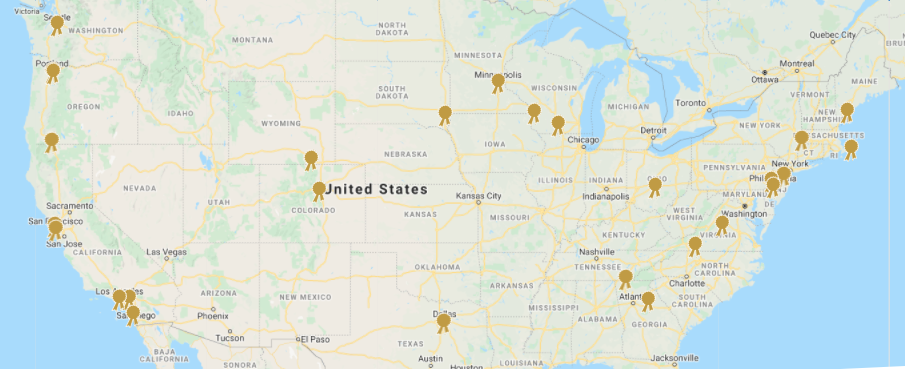
2019 Good Food Award winning coffee roasters are all over the United States – an interesting comparison to the best cities for coffee lovers.

